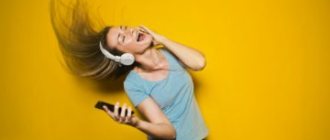Hello dear readers! Lyudmila Redkina is with you. Take your time, you are walking along the embankment and a lebenak approaches you. He shouts: “Auntie/uncle, mother, how I am doing!” Give me some kaaku!” Which means: “Aunt/Uncle, watch me play! Give me some candy!” It’s probably unusual for you to read such words, right? And hearing them is even more fun! Today we’ll talk to you about how to improve your diction and clarity of speech, so that there won’t be something like this: “password”, “do you have a muse? - but I don’t have a muse, that’s such a bad thing in life!”, “girl, huh?” do you like Kafka?, – yes, especially Grefneva…” and so on.
COMPLETE LIST OF HUMAN SKILLS
Why do you need good diction?
First, let's figure out what diction is and why we should care about it.
Diction is a clear, clear pronunciation when a person pronounces words and phrases clearly and legibly. A person with good speech does not “suffer” from a lisp, nasal tone, or stuttering.
Good diction is not a requirement only for TV presenters and teachers. Everyone needs it in life and everyday life. We all get a job, communicate among our circle of acquaintances, we don’t know, in the end, where we will be “taken”, where and with whom we will interact.
A very striking example of a person with “good” diction was from 2021 to 2019 in the Supreme Council of Ukraine - A.V. Parubiy. Everyone who could laugh at his speech, because it’s not often that you hear a SPEAKER (from the word “speak”) of a country’s council with such diction! This is exactly what I mean: we need to take care of improving the quality of speech now, learn to speak beautifully, so as not to make people laugh later...
What is diction and why is it needed?
Diction is the basis of speech technique and includes several indicators without which beautiful pronunciation is impossible: clear articulation, manner, correctness. In the first case, the accuracy of pronunciation of speech sounds is important. If the articulation is unclear, it is difficult to understand the interlocutor, and speech becomes slurred. They say about such people “porridge in the mouth.” The vagueness is mainly associated with the weak functioning of the articulatory apparatus.
Correct articulation lies in the correct movement of the speech organs involved in the formation of sounds. If the tongue, teeth, lips are in the wrong position when pronouncing, a speech defect occurs, which is treated by a speech therapist. Checking and identifying violations of the articulatory apparatus should be carried out in preschool age, when it is easier to obtain a quick and effective result.
The manner of pronunciation includes reduction of syllables (simplification), pace, emotional coloring of speech, and the presence of shortcomings. The latter include:
- ekanye - when a person often uses parasitic sounds in speech instead of a silent pause: m, e, etc., which is noticeable and irritates the interlocutor;
- noise sighs - in the ethics of speech it is not customary to take deep breaths before starting or ending a sentence;
- the use of parasitic words - when, due to the paucity of vocabulary or banal habit, a person often uses parasitic statements between words: this is, as it were, shorter, etc.;
- prolongation of vowel sounds when a person tries to remember something or mentally constructs the next sentence;
- nasalization is a vulgar feature of speech, when in a conversation the last vowels in a word are pronounced nasally;
- smacking.
The listed shortcomings do not decorate any person. It is important to teach a child to speak correctly from an early age, because basic parasitic words and speech habits appear in childhood and continue into adulthood.
Exercises to improve diction and speech clarity
Philologists have studied the issue of the development of diction and come to the conclusion that many people need to improve the articulation of speech of the Russian-speaking population. This is due to the fact that the Russian language is distinguished by “lazy” articulation, unlike English, for example.
There are even certain ways to check if you have good articulation for clear speech:
- Take a mirror and, looking into it, pronounce vowel sounds (a, o, i, e, u, s). Do your lips change position and shape? If they move well and change shape, then you are on the right track.
- Tongue mobility is important for good articulation. Roll it up into a tube. If it does not work out, it is due to muscle weakness or a congenital feature. But you can develop!
- It is also important to open your mouth well. To check this, prepare your palm without the thumb. Then open your mouth as much as possible, slide 4 fingers inward between the upper and lower jaw. If you managed to do this, then your mouth opens without clamps, which means the muscles are ready to work.
So, we’ve sorted out the diagnostics, now let’s decide what to do to develop speech and improve articulation. I present to you several effective exercises to help you achieve your goal.
Warm-up
Take a pen or pencil between your teeth and say any sentence or phrase of 10–15 words. In this case, the pencil must be squeezed as hard as possible. Then take out the stationery object and say the phrase again. You will hear the difference immediately! The entire articulatory apparatus will be tuned to correct speaking, precise and accurate.
It is enough to warm up with a pencil for up to 5 minutes before exercises; this exercise is necessary to “pump up” the articulation muscles.
You can also warm up with nuts. Demosthenes in Ancient Greece developed a unique method of training speech with stones. On the seashore, he picked up a mouthful of stones and shouted words into the stormy sea, trying to pronounce them clearly. Practicing with nuts does almost the same thing. You put them in your mouth and try to pronounce the speech-improving words as best you can.
Warm up with a pencil
Tongue Twisters
At home, you can perfectly improve your speech pronunciation, because everyone has pencils and access to tongue twisters. This is the minimum set of articulation development. But let's move on.
Tongue twisters are used for children aged 4–6 years. This is a very effective way. Tongue twisters are also used to improve the diction of adults; below I will write the most effective of them. In addition, with such phrases you improve not only your speech, but also your vocabulary. Select the tongue twisters you need, just focus on working out all the letters and their combinations.
Listen to a recording of your voice
Oh, I don’t really like listening to my records. I remember how I once heard my childish and funny voice on the recorder, and I was saying quite serious things... I and all my friends laughed at the recording.
But for the development of clear and competent speech, listening to your voice on a recording is a very useful activity. Almost every person will want to change it, work on diction. You need to do it this way: you take some passage from the text, then clearly try to read it, recording it on a voice recorder. If you didn’t like the entry, repeat reading. And so on until you perfect your pronunciation.
The same can be done to improve your English speaking. You can also bring in a good friend who speaks English to listen to an “expert” opinion.
A prerequisite is diaphragm training.
For vocalists and people who stutter, the diaphragm is a condition for success. Who would have thought that some kind of bridge over the stomach determines a lot of money in show business! But for correct speech and singing, mandatory training of this very diaphragm is necessary. A trained diaphragm makes it possible to finish a phrase and finish singing it.
You can train it this way: take a deep breath, then draw out the vowel sound until there is no breath left at all.
When you reach 25-30 seconds of this “pulling”, change the pitch of your voice, try to draw out the sound in a thinner voice.
When and under this condition you stretch the vowel to 25-30 seconds, proceed to inflating balloons. It’s good for your body, and you’ll please those around you! Well, jokes aside, inflating balloons very well develops the diaphragm and increases lung volume.
Combination of different sounds
In addition to tongue twisters, correct speech and diction can be achieved using special combinations of sounds. These combinations use consonants and vowels. By repeating them 5 times, you practice diction. Well, competent speech is added by the experience of reading different books (I’ll give a list below). What combinations will be useful:
- bgi-pki, bga-pka, bge-pke;
- vzdri-fstri, vzdro-fstro, vzdry-fstro;
- stri-ztri, stra-ztra, stro-ztro;
- gkru-khkru, gkro-khkro, gkra-khkra, etc.
Types of diction disorders
There are few people with perfect diction. Each person's speech is individual. However, there are pronunciation problems that interfere with communication. Such errors require correction.
The process of articulation involves the tongue, soft palate, lower jaw and lips. The clarity of pronunciation depends on the anatomical structure of the speech apparatus and the fitness of its muscles. Most often, people with diction disorders face the following problems:
- Decreased mobility of the speech organs. Muscle tightness negatively affects the clarity of diction. People with low lip and jaw activity have trouble producing hissing and whistling sounds.
- Breathing problems. The inability to inhale correctly disrupts the rhythm of speech, the intelligibility of pronunciation and the volume of the voice. When reading aloud or speaking, a person cannot catch his breath and it is difficult for his interlocutor to understand the meaning of what he heard.
- “Swallowing” the endings of words. This problem is most often encountered by people with an accelerated speech rhythm. Understanding them can be very difficult.
Recommendation from the author of the blog – Pavel Butor
Friends, if you want to learn how to sell coolly through voice, then you need to go to Mikhail Kravchenko. He is an expert in the art of public speaking.
I met Misha on Fr. Bali in January 2021 at the Accel anti-conference. Incredible charisma, voice and presentation. He instantly captured our attention - we met and talked.
Me with Mikhail Kravchenko on Accel
I'll tell you what Mikhail will teach. You will never again:
- be afraid to go live;
- worry about speaking in public;
- prohibit yourself from speaking confidently;
- sell for small checks;
- Drain audiences on webinars;
- eat words;
- avoid recording videos and Stories;
- be ashamed of your own speech.
Why doesn't your webinar bring in 1 million?
And if it brings, then why doesn’t it bring 2, 3, 5?
Most experts lose money right here, on the webinar! Weak engagement, retention, completion, low number of registrations and, as a result, shortfall in payments.
No one comes to a topical webinar if they are not interested in the topic and are not ready to buy. And then the question is only for you: “Why did 100 people come to the webinar and buy 10, and not 50, for example?” Mikhail also has such cases.
It's all about you. More precisely, in your sale. Submission. The ability to involve, grab the audience “by the metaphorical balls” and bring it to the end - to the offer. After all, this is obvious: in order for your offer to interest a potential buyer, he must first hear it.
Mikhail Kravchenko helps experts and online schools with a turnover of 1 million rubles increase audience engagement and retention at webinars and increase conversion to applications and payments up to +30% in 2 months through voice training and detailed development of a sales speech.
Misha will teach you to speak in such a way that people, listening to you, will not only stay until the end of the webinar, but will not even leave the computer to go to the toilet. So that they feel as if “an angel has descended from heaven” and is whispering in their ear. Not less.
It will reveal your individuality, charisma, natural charm and magnetism. Will teach you how to control your voice in order to better convey key meanings to the audience. Your performances will have a hypnotic effect.
Mikhail works with the best and only individually. His clients:
- Nikolay Mrochkovsky is one of the founders of the online education market in Russia and the holder of the Guinness record for the largest online business training;
- Vitaly Kuznetsov – founder of the Federation of Online Business and the best expert on startups in Russia;
- Sergei Teplykh - man of the year according to JQ, performed at the Olympic Stadium for 25 thousand people;
- Ajit is the highest paid tantra trainer in Russia and the founder of LYAM-DOM.
All of them are participants in Misha’s individual coaching “Voice in a Million”.
After all, a webinar that brought in 5 million can bring in 10. And voice is one of the most important criteria that most players in the market do not take into account. But the best ones are used.
Your voice and its sound are your personal signature. This is a brand that is expensive. This is a status that inspires trust.
Sign up for a consultation in the header of Mikhail Kravchenko’s Instagram profile.
Article:
A person is not born with the ability to speak, much less do it correctly and clearly.
If a child has problems pronouncing certain sounds, articulation gymnastics can help him. This is a set of exercises aimed at correcting these difficulties. In what cases is it sufficient, and when is a more serious approach required? What articulatory gymnastics exercises can you do at home yourself?
What is articulation gymnastics?
Children in the first years of life very often distort sounds that are difficult to pronounce, because their speech organs are still developing. There are practically no children who speak perfectly clearly right away.
For clear pronunciation of sounds, correct articulatory motor skills are necessary, that is, coordinated activity of the organs of the speech apparatus. If there are any problems in articulatory motor skills, they will always be reflected in sound pronunciation. When speaking, we use about a hundred muscles, including the muscles of the neck, chest, face, tongue, and soft palate. To control all these muscles, many more neurons are used than when walking and running.
Articulatory gymnastics is aimed at those organs that have muscles: tongue, lips (orbicularis oris muscle), facial muscles. But first of all it is intended for the language. The tongue is the main organ of speech, and developing and strengthening its muscles will help you pronounce all sounds more accurately and clearly.
Types of articulatory gymnastics
Such gymnastics can be active and passive. Most often, when talking about articulatory gymnastics, they mean its active form: the one that the child performs himself. It is suitable in cases where articulatory motor skills are not impaired, but simply need to be improved and practiced individual movements.
But there are also more serious situations, such as dysarthria, when the pronunciation aspect of speech is impaired as a result of damage to the nervous system, and the mobility of the speech organs is limited. In this case, it is extremely difficult or impossible for children to perform such gymnastics on their own. After all, their speech organs are not ready for this.
Passive gymnastics is used here: an adult, with his own hands or with the help of devices - probes, spatulas, brushes, performs the movements and poses that we would like to achieve. For example, very often children with motor disorders cannot lift their tongue upward. Naturally, in this case they cannot clearly pronounce the sounds that require this movement. And this problem is unlikely to disappear on its own; serious work is needed on this.
I would also like to dwell on such a problem as a short hyoid frenulum. This may also be the cause of limited tongue mobility. It can be stretched a little through exercise, but if it is too short, then to normalize sound pronunciation all that remains is to trim it.
What kind of gymnastics does a child need?
Do this test: ask your child to stick out his tongue.
Look out for the following signs:
- the child cannot stick out and fix his tongue when asked;
- can stick it out only partially and quickly pulls it back in;
- cannot lift it up or swing it from side to side;
- when the tongue rises upward, the lower jaw rises with it;
- the protruding tongue begins to tremble or deviate to the side;
- there is profuse salivation;
- the child does not clearly pronounce several groups of sounds at once (hissing, whistling, sonorous);
- the pronunciation of not only consonants, but also vowels is impaired (the pronunciation is averaged, there is no clear difference between the sounds).
If several of the listed signs are observed, then most likely the child, in addition to consulting a specialist, needs passive gymnastics and speech therapy massage. Together, they will prepare the baby’s speech apparatus for active articulatory gymnastics and make it possible to produce sounds.
It is better to learn about passive gymnastics techniques from a speech therapist during a consultation. The fact is that disorders can be different; there are no universal exercises that would suit everyone. Only a specialist can explain which techniques will be most effective in each case.
General principles of articulation gymnastics:
- Regularity. This means that daily five-minute exercises will be more beneficial than an hour of gymnastics once a week.
- Game form. Articulation gymnastics can be not only useful, but also a fun activity for your baby.
- Visibility. The more analyzers (vision, hearing, touch) are connected when performing exercises, the more effective the gymnastics. How to achieve visibility? You can use a mirror in which the child will see his reflection. The adult himself, sitting opposite the baby, can act as a model for performing movements. Use pictures, videos of other children doing this gymnastics. Find out through experience what suits your child best and what motivates him more.
- Convenience. Gymnastics should be done in a comfortable position: the back is relaxed, the arms lie calmly, the head has support. The child should be comfortable.
- Gradual complication. Try the easiest exercises first, gradually increasing the difficulty. Each time introduce no more than one new exercise, and only if all the previous ones have already been well worked out.
- Expediency. If a child copes with all the exercises very easily, it is worth considering whether he needs this gymnastics at all. After all, the main goal of these exercises is to learn how to do something that you are not yet very good at.
- The right attitude. It should not be viewed as a panacea; it is just one method.
Gymnastics techniques
You can easily master these active gymnastics exercises, aimed at statics or dynamics, yourself. Each pose is held for 5-7 seconds and repeated several times.
- "Pipe". The lips need to be folded into a tube and pulled forward as much as possible.
- "Fence". We explain that you need to smile so as to show your teeth.
- Alternating exercises “Pipe” and “Fence”.
- "Rabbit". You need to lift your upper lip to open your incisors. "Evil horse" You need to imitate the snorting of a horse. Exhale forcefully through your mouth without opening it. At the same time, the lips will begin to vibrate.
- "Piglet." You need to stretch out your lips with a tube, and then use closed lips to rotate them in a circle in different directions.
- "Horse". The child should click his tongue, voicing the clatter of hooves.
- "Fungus". The tongue is firmly applied (sucked to the palate) and held in this position.
- "Harmonic". Holding your tongue in the “mushroom” position, you need to open/close your mouth several times.
- "Burst the balloon." The cheeks are puffed out, then the child must lightly hit them to force the air out.
- "Hamster". First, both cheeks are inflated, then the right and left ones alternately.
- "Fish" The cheeks are drawn in and held in this position.
- "Spatula". The relaxed tongue should be placed on the lower lip (without sticking out).
- "Needle". The narrow tongue protrudes as far as possible.
- "Watch." Open your mouth slightly and alternately touch the left and right corners of your mouth with the tip of your tongue.
- "Cup". With your mouth wide open, you need to keep your tongue up.
- "Focus". Raise your tongue to the “cup” position and gently blow on the tip of your nose. You can put a piece of cotton wool on the tip of your nose.
- "Delicious jam." Use your wide tongue to lick your upper lip (you can lick real jam).
- "Painter". We run our tongue across the palate in the direction from front to back (from teeth to throat). You can tell your child that the tongue is a paint brush that paints the sky.
- “Brushing our teeth.” The tip of the tongue needs to be drawn along the upper and then along the lower teeth from one edge to the other.
- "Monkey." Open your mouth slightly and place your tongue between your lower lip and lower teeth. The lips are brought together.
- "Bulldog". From the “monkey” position, move your tongue to a position between the upper lip and upper teeth. Lips close.
- "Circle". Mouth closed. The tongue moves from the inside, smoothly outlining a circle with the tip of the tongue.
- "Sail". The end of the tongue rests on the upper teeth and is held in this position.
- "Swing". The mouth opens and the tongue alternately rises up and down.
- "Drummer". Smile, open your mouth, place your tongue behind your upper teeth, repeat loudly, clearly, repeatedly: “D-D-D-.” Gradually speed up the pace, do not bring your teeth closer together.
- “Kneading the dough.” The tongue rests on the lower lip (as in the “scapula”), while the mouth opens and closes, the lips slap the tongue.
- “Let’s bite the tongue.” Smile, open your mouth slightly, bite the tip and center of your tongue.
- “Where is the candy?” You need to close your mouth tightly, using the tip of your tongue to press on one or the other cheek from the inside.
- "Turkey" ("Chatterbox"). Smile, show your teeth, open your mouth slightly, put your wide tongue on your upper lip and make quick movements with the tip of your tongue along the upper lip back and forth, trying not to lift your tongue from the upper lip.
- "The steamer is humming." When smiling, you need to bite your tongue and say “y” for a long time.
Do these exercises regularly, but without making them a chore for your child, and you will definitely see progress!
The most effective tongue twisters for improving diction in adults
I wrote above about the importance of tongue twisters for the development of ideal diction for an adult. I will only note that after recording your voice, you must decide which speech sounds do not suit you. Perhaps it will be hissing or “l-r”, or other sounds. And in accordance with your observations, select tongue twisters that work specifically on them. And for prevention, you can train them all.
- The Ligurian traffic controller regulated in Liguria.
- The protocol about the protocol was recorded by the protocol.
- Don’t smoke, Turk, pipe, better buy a pile of peaks, better buy a pile of peaks.
- The angry widow put the firewood into the barn: once firewood, two firewood, three firewood - all the firewood could not fit, and two woodcutters, two woodcutters, for the emotional Varvara, expelled the firewood across the width of the yard back to the woodyard, where the heron withered, the heron withered, the heron died .
- Just as you can’t ring all the bells, you can’t beat them again, you can’t beat all the tongue twisters, you can’t speed them up, but trying is not torture.
Well, something easier.
- Tell us about your purchases, about which purchases, about your purchases, about your purchases, about your purchases.
- The bull was blunt-lipped, the bull was blunt-lipped, the bull's white lip was dull.
- The pig snouted, white-nosed, blunt-nosed, dug up half the yard with its snout, dug, dug.
- Advertising for grips has seams with coverage, but potholders without coverage have been snatched up.
- In the shallows we lazily caught burbot, in the shallows we caught tench.
- Their pesticides are not comparable to ours in terms of their pesticide effectiveness.
- We ate and ate ruffs at the spruce tree, we barely finished them off.
- Appreciates the flail cut by the braid.
- The hedgehog has a hedgehog, the snake has a squeeze.
- From the clatter of hooves, dust flies across the field.
Tongue twisters are good for developing memory and attention in adults, in addition to speech.
Tongue twister to improve diction
Books that improve speech and vocabulary
To improve your speech, you need to read texts on different topics. In this situation, speech is enriched with new words, logic appears in statements, and speech literacy improves. You won’t find a professor who couldn’t connect two words or said “here”, “there”, “tuta”, “Thursday”, “sERtse”. This is because books improve the rhetoric of speech and help formulate thoughts.
I have made a selection of books that can become for you lessons in the Russian language, literature, as well as an excursion into linguistics and other philological sciences.
- Vadim Khrappa “From Adam’s apple to the apple of discord.”
- Korney Chukovsky “Alive as life.”
- Larry King: How to Talk to Anyone, Anytime, Anywhere.
- Nigel Brown "The Oddities of Our Language"
- Natalya Rom “I want to speak beautifully! Speech techniques.”
- Victoria Volodina “Album on speech development.”
- Lev Uspensky “A Word about Words.”
These books will help you improve your spoken Russian, and with their help you will determine how to use unfamiliar words for their intended purpose.
Tips for successfully developing diction
When a person studies with a professional, it is easier to improve diction than when working independently. Speech therapists give advice on how to make home learning interesting, useful, and effective.
- Conduct classes every day. Daily work on powerful exercises allows you to improve your diction in a few weeks.
- Allow 15-30 minutes a day for speech gymnastics, depending on age.
- When teaching diction, it is customary to record speech on a voice recorder and listen to it afterwards to mark achievements.
- You need to perform exercises according to the principle from simple to complex.
- In addition to classes, it is necessary to read fiction to enrich your vocabulary.
In this way, you can achieve a significant improvement in diction. A beautiful and well-placed voice makes it possible to influence people’s opinions in communication, increase status, and makes the conversation easy and relaxed, unburdened.
How to improve your child's speech
I once wrote many articles about improving the speech of a child aged 4 years and older. And now this is really a problem for many parents. We will not discuss the reasons, mechanisms and various nuances of this topic; this article is not about that. I’ll just say that you need to try hard to improve the oral speech of preschoolers and teenagers. That's what speech therapists are for.
And at home, your task is to teach kids to pronounce all sounds, and schoolchildren to formulate their thoughts and communicate in complete sentences.
Correct pronunciation of sounds is not an easy task for many. Here articulation exercises, gymnastics, massages, songs and the development of fine motor skills of the hands will come to the rescue - this, by the way, also develops memory and attention. There are actually a lot of ways.
By the age of 5, children should be able to pronounce all sounds. Older children already need the help of a speech therapist or psychologist. You can improve the speech of a child aged 6 years and older in terms of vocabulary and expressing his thoughts only with books and communication. After all, no gadgets can replace live communication, sudden questions and their explanations, presentations of characters from fiction books and their descriptions out loud.
How to improve diction at any age
Both children and adults can improve their oratory skills. Diction training depends on the choice of exercises and texts, source material (deviations in speech). Texts for training diction and speech are used according to the principle from simple to complex. You can start working with a combination of complex consonants. When working through the exercise, it is important to pronounce each individual sound correctly so that it is clearly audible to the interlocutor. First, all letter combinations are pronounced, then the main ones are highlighted, where speaking is more difficult, in order to hone them.
Speech therapists advise monitoring the speech apparatus in the mirror when pronouncing sounds. The mouth, teeth, tongue, lips, cheeks should actively move and not be in one position. If U, then these are lips like a tube, O - an oval extended forward, A - the mouth is wide open, W - the teeth are closed, the mouth is smiling, etc. At first, the syllables are spoken slowly, clearly highlighting a separate sound, then you need to speed up the pace, but do not lose clarity of pronunciation: zhdr, krlp, mkrpv, mpnkr, smprv, shnptm, kzhdo, adzhvk, shlkat, kshto, shlotk, ktsch, shtko, kpt, TPK, vaztd, mkrt, jr, grlt.
From syllables you can move on to words. The task remains constant: clearly pronounce each sound in a word, first slowly, then increasing the pace. Upon completion of the exercise, a person should read words quickly, clearly, the organs of the speech apparatus are working actively - “living mouth”.
You can use the following words: armored personnel carrier, department, stay awake, hello, cheer up, ornate, philosophize, philosophize, excite, superbeing, super-anxious, transplantation, transcription, Protestantism, get into the barrel, counter-breakthrough, quarrelsome, controller, usherette, space, parasitology, postscript , explosion point, end, adventure, synchrophasotron, phenolphthalein, tetrahydrocannabinol.
At the end of the warm-up, say a few complex sentences, then move on to reading texts. During gymnastics, it is important to monitor your voice. It should not jump or change when pronouncing complex combinations or individual sounds. It is necessary to maintain an even tone of speech:
- Masha gave Romasha the whey from the yogurt.
- Masha was given porridge, and Sasha was given yogurt.
- Difficult to pronounce words are called difficult to pronounce because they are difficult to pronounce.
- A person who is poorly coordinated has a poorly coordinated gait.
- A trumpeter walks down the street, a trumpet sings, a trumpet roars, a trumpet blows.
- Malanya the chatterbox chattered and chattered that 33 ships tacked, tacked, tacked, tacked, tacked, but didn’t tack.
You need to read the sentences out loud, slowly at first, then picking up the pace. You can take a separate one and read it at an increasing pace until perfect pronunciation at a high speed is achieved.
How to develop diction and clarity of speech with the help of training
School of speech technique and voice production @LABVoice includes 6 main blocks:
- Speech breathing.
- Working with diction, articulators, resonators.
- Manipulation, intonation and expressiveness of speech.
- Self-presentation, improvisation and speech logic.
- Speech therapy exercises.
- Public speaking, fear of speaking, discomfort in communication.
The training was developed by Maria Savicheva, an expert in speech technique and voice production (more than 20 years of experience).
Suitable for people who:
- a quiet, expressionless, unconvincing voice;
- there is misunderstanding on the part of colleagues and relatives;
- difficulties with pronunciation, sluggish, unclear diction, sore throat, loss of voice;
- relationships with the opposite sex do not work out;
- no career growth;
- They don’t listen, they interrupt, they don’t give a chance to speak in company.
1,273 students were surveyed after classes. Of them:
- 100% have become more confident in themselves.
- 84% began to earn more.
- 100% strengthened leadership skills.
- 94% felt much sexier and more attractive.
- 88% no longer have stage fright.
This is 100% online learning. More than 7,000 participants have already completed it.
How the training works:
- First you will conduct a Voice and Speech analysis. Receive personal recommendations and additions to the course program.
- Follow video lessons and strictly follow the expert’s instructions.
- Interim analysis of voice and speech with program adjustments.
- Final voice analysis with an expert’s conclusion and further recommendations.
For 249 rubles. You can get a voice test right now. Then they will create an individual program for you depending on your results. The price of training will depend on this (3,500–26,900 rubles). You can pay immediately or in installments over 4 months.
The training time is approximately 1.5–2 months.
If you don't like the training, you can get your money back within 14 days.
You can also get access to a free trial lesson for 5 days.
Also, if you want to powerfully improve your voice, I recommend taking courses at the Ostankino Show School.
First, you will pass a test and get into a free casting.
On course:
- Improve diction, articulation, eliminate speech defects.
- Learn to dub films, cartoons, podcasts, YouTube videos.
- Improve your acting skills and voice intonation.
At the end of the training you will receive a diploma and assistance in finding orders.
Improving diction in teenagers
Teenagers also need to start working on developing diction after articulation and breathing exercises. Exercises should be aimed at developing the speech apparatus, pronouncing individual sounds, complex words, and sentences. While working, you need to simultaneously monitor your breathing: at the beginning of a sentence, take an imperceptible breath, distribute it over the remaining time until the end of the speech. On the next sentence, repeat the procedure again.
The following suggestions and exercises are suitable for warming up a teenager. These can be tongue twisters, short poems, pure tongue twisters.
Difficult texts for diction must be taken after successfully pronouncing difficult tongue twisters. When reading a text, it is important to maintain clear pronunciation, train correct articulation, gradually increasing the tempo.
When working with teenagers, it is also important to have interesting and unusual material. Due to their age, children may approach activities irresponsibly. Properly selected exercises will distract you and set you in a positive mood. A cheerful Chinese tongue twister works well in this case.
Once upon a time there lived three Chinese - Yak, Yak-Tsidrak, Yak-Tsidrak-Tsidron-Tsidroni, and three more Chinese women - Tsypa, Tsypa-Dripa, Tsypa-Dripa-Lampomponi. Yak got married to Tsypa, Yak-Tsidrak to Tsypa-Dripa, Yak-Tsidrak-Tsidron-Tsidroni to Tsypa-Dripa-Lampomponi... So they had children: Yak and Tsypa - Shah, Yak-Tsidrak and Tsypa-Drypa - Shah -Sharah, at Yak-Tsidrak-Tsidroni with Tsypo-Drypa-Lampoponi - Shah-Sharah-Sharoni.









